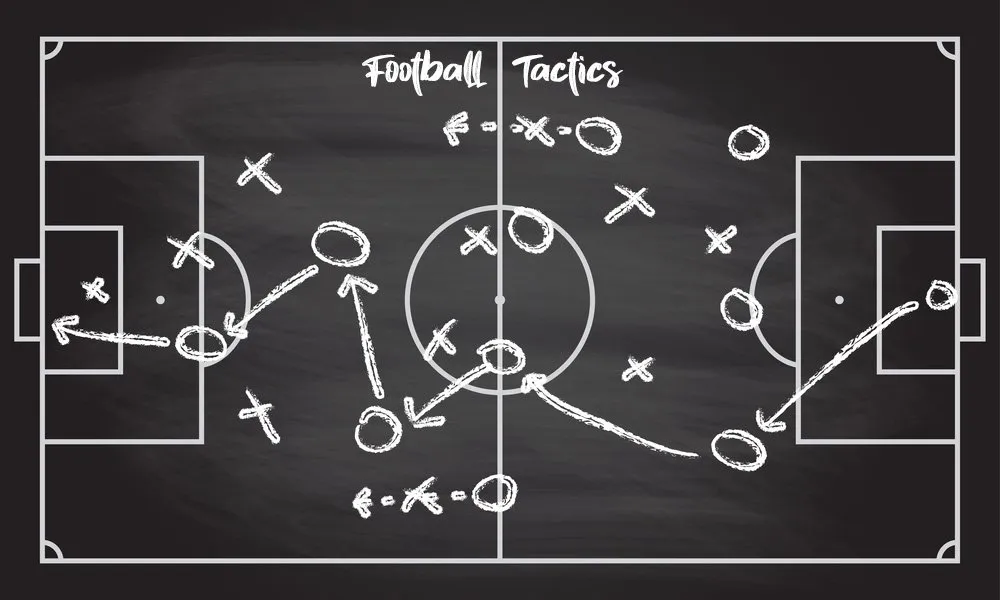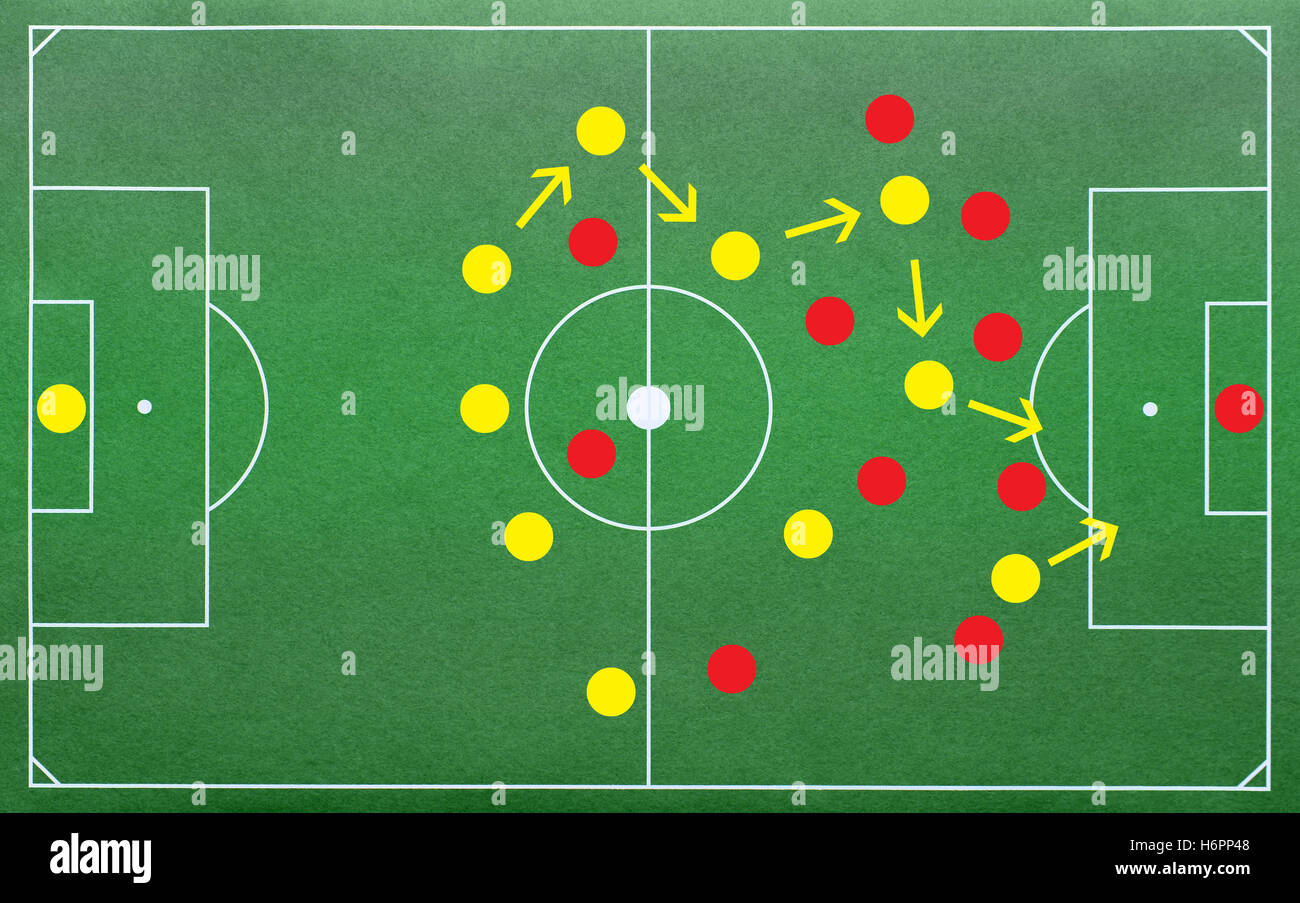
The Grand Chessboard: Deconstructing Football’s Greatest Tactical Masterpieces
Football, often dubbed "the beautiful game," is far more than just 22 players chasing a ball. Beneath the surface of individual brilliance and athletic prowess lies a complex, ever-evolving strategic battle – a grand chessboard where managers are the grandmasters, and tactics are their carefully crafted moves. From rigid defensive systems to free-flowing attacking spectacles, the history of football is punctuated by revolutionary tactical approaches that have not only won trophies but also fundamentally reshaped how the game is played.
Defining the "best" tactic is inherently subjective, as success is often context-dependent, relying on the available players, the era’s prevailing styles, and even the rules of the game. However, certain tactical systems have left an indelible mark, inspiring generations, dominating eras, and offering profound insights into the strategic depth of the sport. This article will deconstruct some of the most influential and successful tactical masterpieces that have graced the footballing world.
1. Catenaccio: The Art of Defensive Fortification (1960s)
Architects: Nereo Rocco (Padova, AC Milan), Helenio Herrera (Inter Milan)
Emerging from Italy in the post-war era, Catenaccio, meaning "door-bolt" or "chain," became synonymous with defensive solidity and ruthless efficiency. While its roots can be traced to Karl Rappan’s "verrou" (bolt) system in Switzerland, it was Helenio Herrera’s Grande Inter of the 1960s that truly perfected and popularized it.
At its core, Catenaccio prioritized defense above all else. It typically involved four dedicated defenders, a man-marking system where each defender tracked an opposing attacker, and most crucially, a "libero" or sweeper positioned behind the defensive line. This libero, often an intelligent reader of the game like Armando Picchi for Inter, acted as a free man, sweeping up loose balls, covering errors, and initiating counter-attacks. The midfield was often packed, suffocating opponents in the center, and wingers would track back diligently.
Inter’s success under Herrera, including two European Cups, demonstrated that football could be won by being exceptionally difficult to beat. While often criticized for its perceived negativity and dullness, Catenaccio was a highly effective system that demanded immense discipline, tactical awareness, and unwavering commitment from every player. It forced attacking teams to think differently and laid the foundational principles for organized, deep defending that remain relevant in modern football.
2. Total Football (Totaalvoetbal): The Fluid Revolution (1970s)
Architects: Rinus Michels, Johan Cruyff (Ajax, Netherlands National Team)
In stark contrast to Catenaccio’s rigidity, the Netherlands introduced the world to "Total Football" in the 1970s, a philosophy that championed fluidity, versatility, and relentless attacking. Spearheaded by manager Rinus Michels and epitomized by the genius of Johan Cruyff, Total Football was less a formation and more a concept of positional interchange.
The central tenet was that any outfield player could take over the role of any other player. If a full-back pushed forward, a midfielder or even a winger would drop back to cover their position. This constant movement and positional rotation created numerical overloads in various areas of the pitch, making it incredibly difficult for opponents to mark players or anticipate attacking patterns. The system relied on highly intelligent, technically gifted players who possessed excellent spatial awareness and tactical understanding.
Total Football also incorporated a high defensive line and an aggressive pressing game, aiming to win the ball back as quickly as possible high up the pitch. This combination of fluid attack and proactive defense created a relentless, suffocating style of play that was both effective and exhilarating to watch. Ajax won three consecutive European Cups (1971-1973), and the Dutch national team reached the World Cup final in 1974, captivating the world with their innovative and beautiful game. Total Football laid the groundwork for many modern attacking philosophies, emphasizing collective movement, space creation, and technical mastery.
3. Arrigo Sacchi’s AC Milan: The Pressing Machine (Late 1980s)
Architect: Arrigo Sacchi (AC Milan)
Building upon the principles of Total Football but adding a new layer of collective organization and pressing intensity, Arrigo Sacchi’s AC Milan of the late 1980s redefined defensive and offensive synchronization. Sacchi, a coach who famously never played professional football, believed that football was about "collective intelligence" and "covering space, not men."
Sacchi’s Milan employed a suffocating high defensive line, often leaving only 20-30 meters between their deepest defender and their most advanced attacker. This compressed space starved opponents of time and room, forcing errors. Crucially, they abandoned traditional man-marking in favor of zonal marking, where players were responsible for specific areas of the pitch, moving as a compact unit. When one player pressed, the others shifted to cover, creating a collective "press" that hunted the ball in packs.
Offensively, Sacchi’s team was equally revolutionary. They used a 4-4-2 formation that was incredibly fluid, relying on intricate passing triangles, overlapping full-backs (like Paolo Maldini and Mauro Tassotti), and the devastating attacking trio of Ruud Gullit, Marco van Basten, and Frank Rijkaard. Their goals often came from intricate, rehearsed movements and quick combinations. Sacchi’s Milan won two consecutive European Cups (1989, 1990) and remain one of the most revered club sides in history, proving that a meticulously drilled, high-intensity collective could dominate.
4. José Mourinho’s Pragmatism: The Art of the Low Block and Counter (2000s)
Architect: José Mourinho (Porto, Chelsea, Inter Milan, Real Madrid)
In an era increasingly dominated by possession-based football, José Mourinho emerged as a master tactician of a different kind: the pragmatist. While often criticized for his "negative" approach, Mourinho’s systems were undeniably effective, delivering trophies for every club he managed in his prime. His philosophy was rooted in defensive solidity, tactical discipline, and devastating counter-attacks.
Mourinho’s teams typically employed a "low block" – defending deep in their own half, often with a compact 4-4-2 or 4-2-3-1 formation. The focus was on limiting space for the opponent, forcing them wide, and preventing penetration through the center. Every player had a clear defensive responsibility, and the team worked as a disciplined unit to deny opportunities. Once possession was won, the transition to attack was rapid and direct, often leveraging the pace of wide players and the clinical finishing of a central striker.
This approach was exemplified by his Porto side winning the Champions League in 2004, his first Chelsea team dominating the Premier League, and most notably, his Inter Milan team winning a historic treble in 2010 by neutralizing the attacking prowess of Barcelona and Bayern Munich. Mourinho’s tactics proved that sometimes, giving up possession and waiting for the opportune moment to strike could be the most effective path to victory, particularly in knockout competitions.
5. Tiki-Taka: The Apex of Possession and Positional Play (Late 2000s – Early 2010s)
Architects: Johan Cruyff (foundations at Barcelona), Pep Guardiola (Barcelona, Spain National Team)
While Total Football laid the philosophical groundwork, Pep Guardiola’s Barcelona and the Spanish national team perfected "Tiki-Taka," a style of play that elevated possession football to an art form. It wasn’t just about having the ball; it was about using possession as a defensive tool, dictating the tempo, and patiently probing for openings.
Tiki-Taka is characterized by short, intricate passing, constant movement off the ball, and positional interchange. The aim is to create numerical superiority in various areas of the pitch, particularly in midfield, to maintain possession and circulate the ball until a clear chance emerges. Central to this was the concept of "Juego de Posición" (Positional Play), where players occupy specific zones on the pitch to create triangles and diamonds, ensuring multiple passing options for the ball-carrier at all times.
The system relied on exceptional technical players like Xavi, Andrés Iniesta, and Lionel Messi, who possessed incredible close control, vision, and decision-making under pressure. Barcelona’s dominance under Guardiola (2008-2012), including two Champions League titles, and Spain’s consecutive European Championships (2008, 2012) and a World Cup (2010) showcased Tiki-Taka’s suffocating effectiveness. It demonstrated that patiently crafted attacks, combined with a relentless press to regain possession, could dismantle even the most organized defenses.
6. Gegenpressing: The High-Intensity Counter-Press (2010s – Present)
Architects: Ralf Rangnick (foundations), Jürgen Klopp (Borussia Dortmund, Liverpool), Thomas Tuchel
Gegenpressing, or "counter-pressing," is a tactical philosophy that has gained immense prominence in modern football, most notably championed by Jürgen Klopp. While Sacchi’s Milan introduced collective pressing, Gegenpressing takes it to an even more aggressive, high-octane level.
The core idea is simple yet demanding: as soon as possession is lost, the nearest players immediately press the opponent to win the ball back within seconds. The aim is not just to regain possession, but to do so in an advantageous position – high up the pitch, often when the opponent is most vulnerable (just after winning the ball and before they can properly organize their attack). This immediate pressure forces quick decisions, often leading to turnovers in dangerous areas.
Once the ball is won back, the transition to attack is direct and vertical, aiming to exploit the disorganized opponent quickly. Klopp’s Borussia Dortmund and later Liverpool sides exemplified Gegenpressing, playing a thrilling, high-energy brand of football that overwhelmed opponents. Liverpool’s success, including a Champions League and Premier League title, validated the effectiveness of this demanding system, which requires incredible stamina, tactical discipline, and a collective desire to relentlessly hunt the ball.
The Ever-Evolving Chessboard
The history of football tactics is a testament to continuous innovation and adaptation. From the defensive solidity of Catenaccio to the fluid artistry of Total Football, the organized pressing of Sacchi’s Milan, the pragmatic effectiveness of Mourinho, the suffocating possession of Tiki-Taka, and the high-octane intensity of Gegenpressing, each system has contributed invaluable lessons to the strategic tapestry of the sport.
No single tactic is definitively "the best" for all situations. Modern football increasingly sees managers adopting hybrid approaches, blending elements from different philosophies to suit their players and counter specific opponents. The rise of data analytics, sports science, and specialized coaching roles further refines these tactical approaches, making the game more complex and nuanced than ever before.
As the game evolves, new tactical masterpieces will undoubtedly emerge, built on the foundations laid by these legendary systems. The grand chessboard of football will continue to see new strategies, new gambits, and new forms of beauty, ensuring that the tactical battle remains as captivating as the action on the pitch.



